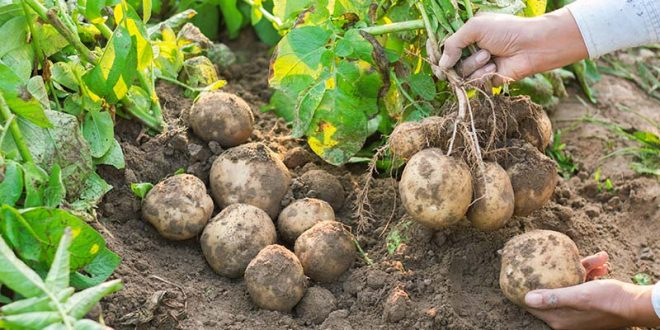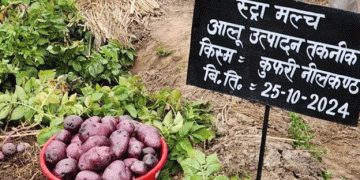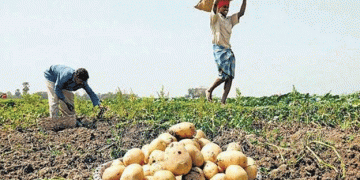North-western European Potato Growers (NEPG) analysts recently announced their first estimates for the EU-04 zone potato area in 2022, talking about a 10,100 ha increase in the four countries (Belgium, The Netherlands, France, and Germany) by +2.0% to reach 507,300 ha. Compared to the five-year average, the increase is +0.9%.
“At the end of the 2021-2022 winter and the beginning of spring, the first estimates nevertheless suggested a reduction in the area of 2022, mainly due to ever-increasing production costs,” the NEPG experts recently declared.
Some starch potato producers (in Germany, France, and the Netherlands) and some producers of potatoes intended for the fresh market (in Germany and France) have modified their outlets to produce fried varieties or for the production of crisps.
End of Campaign for the Old Harvest
In mid-May, many producers were still hoping for an end to the season with prices around EUR300/ton, but the rain put an end to their hopes.
“For four to five weeks we have a weather market related to the weather which could still influence old crop prices,” the NEPG analysts mentioned. “Industrialists stopped buying the old crop a few weeks ago, some of them have even sold contracts they didn’t need to other processors. Small volumes of excess free tons were sold with the last deliveries of contracts. The new crop is starting to hit the market while all the old crop has not yet been marketed.”
Beginning of the Campaign for the New Crop
About the new crop, whether it is the early potatoes (mainly in Germany and Belgium) or the main crop for storage, it grows quickly and generally develops well. The early spuds are one to two weeks ahead of a normal year (with several tubers/plant regularly weaker than usual), and in some conservation crops (for the medium-early varieties), the first signs of senescence are already observed (certainly where there is had less rain and higher temperatures).
“Some fields of conservation varieties flowered earlier than usual, without closing the rows, which means that potential output could be lower. Irrigation efficiency (where it is widely used) is not as good as usual, and some water turns are not made or are postponed due to high energy prices. Climatic hazards (heatstroke, heavy rainfall, drought, etc.) past, present, and future could have other surprises in store for us in the days or weeks to come, through their influence on the final yield and quality,” the above-mentioned experts explained.
CAP Reform and the Production Costs Could Have an Influence on 2023 Spud Sowings
The high prices of wheat, rapeseed, and grain maize and the potential increase in the rental price of land could influence future potato plantings. New environmental constraints linked to the European Commission’s proposal to halve the use of phytosanitary products by 2035 could also limit the future surfaces of potatoes and/or discourage certain potato growers.
“The price of contracts for the 2023-2024 season will have to take into account the increase in costs of production!” the NEPG experts showed in their report.
Given the general increase in production costs, producers estimate that the price of contracts for the 2023 harvest will have to take these increases into account. Potato production costs – which have steadily increased over the past 12 months – will certainly influence the area and production of potatoes in 2023.






